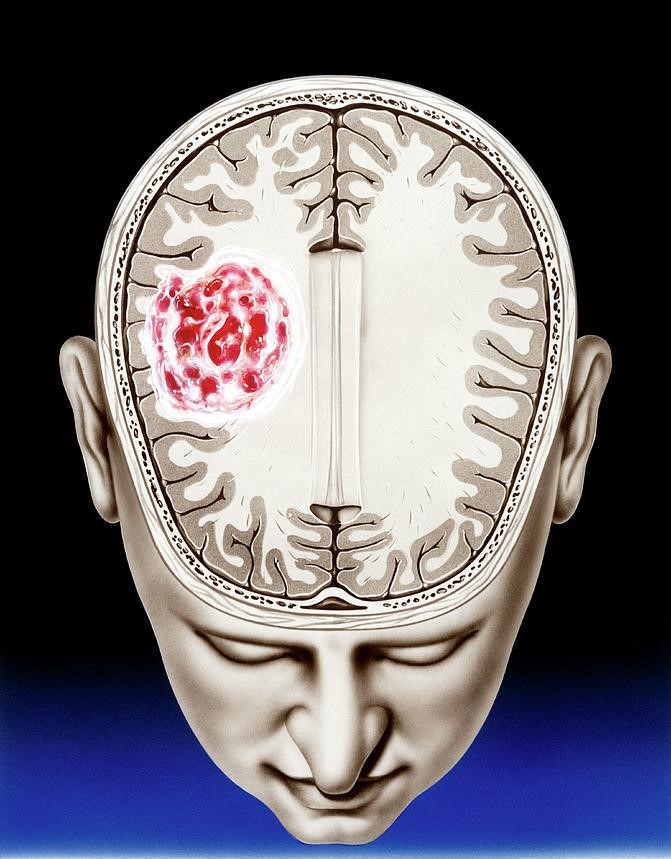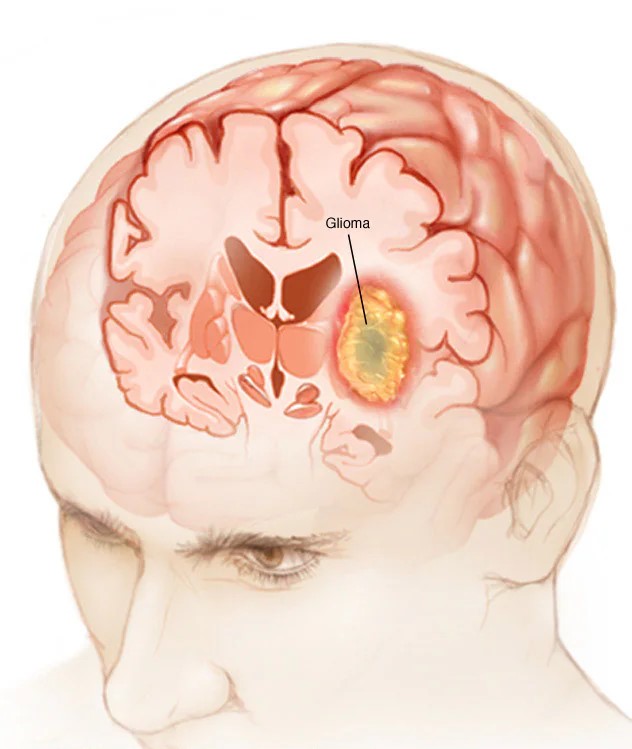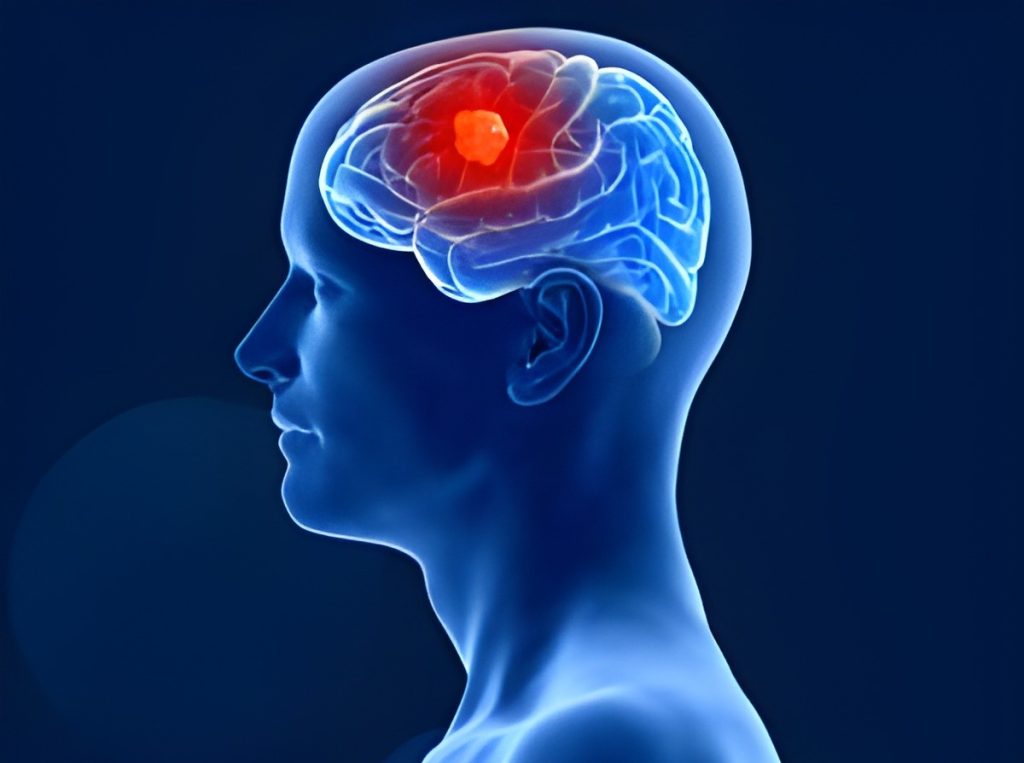Glioma is a type of tumor that originates in the glial cells of the brain or spinal cord, which are the supportive cells that help protect and nourish neurons. It is one of the most common forms of primary brain tumors, meaning it begins in the brain rather than spreading from elsewhere in the body. Gliomas are classified into different types based on the specific glial cells they arise from, including astrocytomas, oligodendrogliomas, and ependymomas. They are also graded by the World Health Organization from grade 1 (least aggressive) to grade 4 (most aggressive), with glioblastoma being the most severe form. Symptoms vary depending on the tumor’s size and location, but may include headaches, seizures, memory problems, and changes in vision or behavior. The exact cause is often unknown, but factors such as genetic mutations and radiation exposure may increase risk. Treatment options typically involve a combination of surgery, radiation therapy, and chemotherapy, and in some cases, targeted or immunotherapy. Early diagnosis and treatment are crucial for improving outcomes.

Types of Glioma:
Gliomas are classified based on the type of glial cell they come from:
- Astrocytoma – Arises from astrocytes; includes low-grade (slow-growing) and high-grade (aggressive) types like glioblastoma.
- Oligodendroglioma – Develops from oligodendrocytes, which produce the myelin sheath around nerve cells.
- Ependymoma – Originates from ependymal cells lining the ventricles of the brain and the spinal cord.
Grades of Glioma (WHO classification):
Gliomas are graded by the World Health Organization (WHO) from Grade 1 to Grade 4, based on how aggressive the tumor is:
- Grade 1: Slow-growing and least aggressive.
- Grade 2: Relatively slow-growing but may return after treatment.
- Grade 3: Malignant and more likely to recur.
- Grade 4: Highly aggressive and fast-growing (e.g., glioblastoma multiforme).
Symptoms of Glioma:
Symptoms vary depending on the tumor’s location but may include:
- Headaches
- Seizures
- Memory loss
- Personality or behavioral changes
- Vision or speech problems
- Weakness or numbness in limbs

Causes and Risk Factors:
The exact cause of glioma is not fully understood, but several factors are believed to contribute to its development. One possible cause is genetic mutations that occur in the DNA of glial cells, which can lead to uncontrolled cell growth and tumor formation. Some gliomas may be associated with inherited genetic disorders, such as Li-Fraumeni syndrome or neurofibromatosis, although these cases are rare. Exposure to ionizing radiation, such as radiation therapy to the head during childhood, has also been linked to an increased risk of developing gliomas later in life. Additionally, age is a factor, as gliomas are more common in adults over 45, and men are slightly more likely to develop them than women. While lifestyle and environmental factors, such as cell phone use or chemical exposure, have been studied, no conclusive evidence links them directly to glioma. In most cases, gliomas occur sporadically without a clear cause.
- Genetic mutations
- Exposure to radiation
- Family history of brain tumors (rare)
Treatment and solutions :
The treatment, or solution, for glioma depends on several factors, including the tumor’s type, grade, size, and location, as well as the patient’s overall health. The primary treatment is often surgery, aiming to remove as much of the tumor as safely possible. In cases where complete removal isn’t feasible, surgery may still help relieve symptoms and reduce pressure on the brain. Radiation therapy is commonly used after surgery to kill remaining cancer cells, and chemotherapy may also be recommended, especially for high-grade or aggressive tumors. Newer treatments, such as targeted therapy and immunotherapy, are being explored and may be used in certain cases depending on the tumor’s genetic profile. Supportive care, including medications to control seizures, swelling, or pain, is also essential for improving quality of life. Because gliomas can be complex and challenging to treat, a team of specialists—including neurosurgeons, oncologists, and radiologists—is often involved in developing a personalized treatment plan. Early detection and a multidisciplinary approach can significantly improve outcomes.
Treatment depends on the type, grade, and location of the glioma and may include:
- Surgery to remove as much of the tumor as possible
- Radiation therapy
- Chemotherapy
- Targeted therapy or immunotherapy (in some cases)
